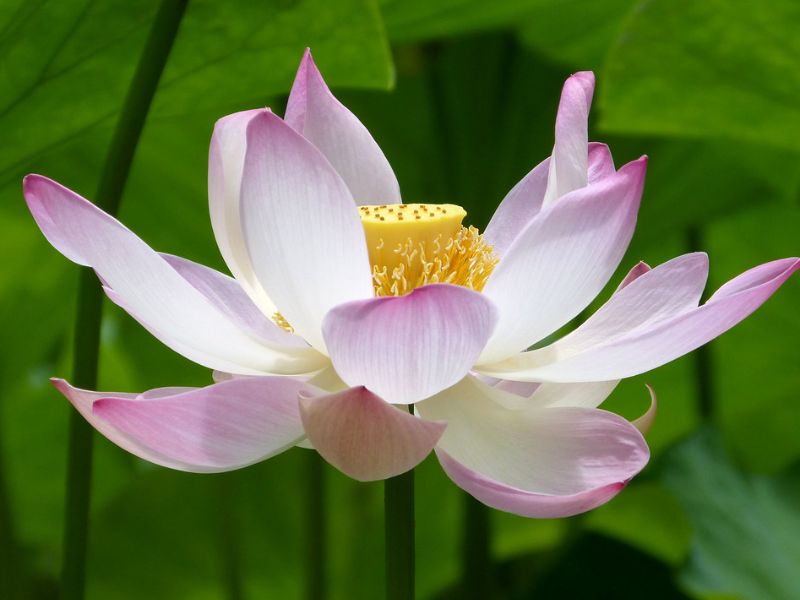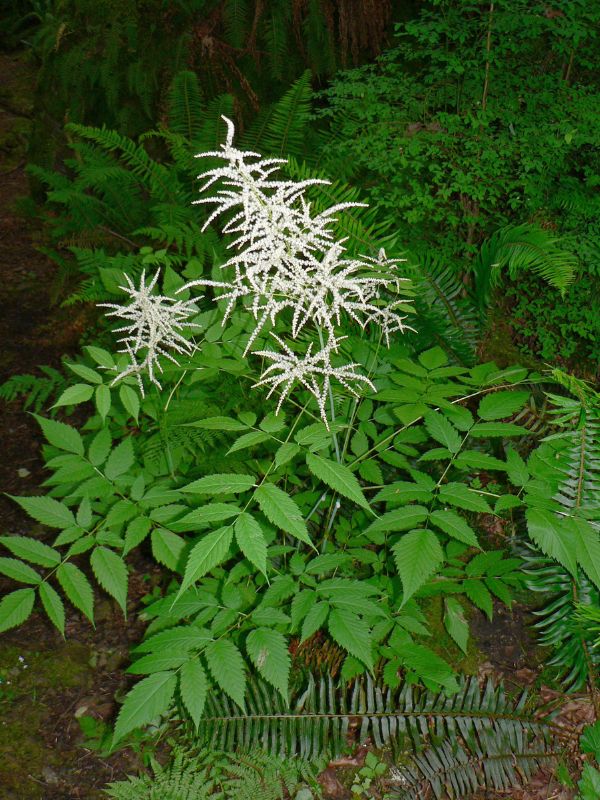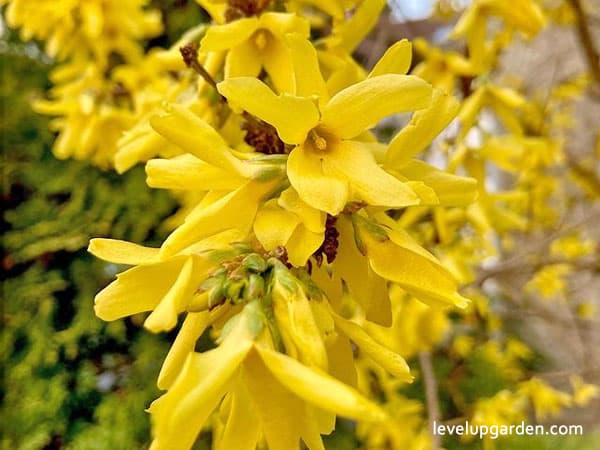Goji berry, also known as Wolfberry, is a deciduous shrub that grows up to 2.5 meters at a moderate rate. The berries can be eaten raw or cooked. The berries are berry-like with a diameter of about 2 cm. They have a sweet, mild licorice flavor but only the ripe fruit is eaten.
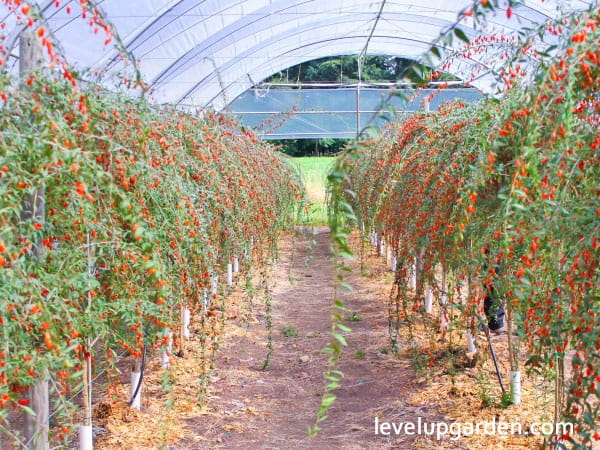
Goji Berry young shoots are cooked and used mainly as a flavoring. They can also be cooked lightly for 3-4 minutes and used as a vegetable. The flavor is somewhat similar to watercress, but it can also be described as peppermint-like.
Its leaves wilt rapidly when harvested. The leaves are used as a tea substitute. Lycium barbarum has been used for centuries in China as a traditional medicine and food.
Goji berries are so nutritious that they have been called a superfood, and they produce small, delicious berries. They have fewer thorns than other varieties and are very rich in antioxidants. Its fruits are delicious when fresh, dried, or frozen. It is optimum when harvested in the third year. It is known to have excellent heat, cold, and moisture tolerance.
It is a shrub native to China, but it is now found in Asia and southeastern Europe. It is one of two species of boxwood in the eggplant family from which goji berry and Wolfberry are derived, the other being Lycium chinense. It is a very easy plant to grow and is hardy throughout the United States, from cold to hot regions.
It grows quickly in any sunny location in any soil and can produce a large number of berries with very little work. Plant it in your garden and before you know it, you will have plenty of berries to enjoy. This plant can grow in any garden and requires no skill or experience in gardening. If you don’t have a garden, you can grow it in a pot with flowers and vegetables, or plant it near a sunny wall where it will take up little space.
I. Plant Profile – An Overview of the plant
| Common name | Goji Berry, Chinese wolfberry, Barbary matrimony vine, Red medlar, Matrimony vine, Chinese boxthorn |
| Botanical Name | Lycium barbarum |
| Family | Solanaceae |
| Genus | Lycium |
| Species | L. barbarum |
| Mature Height | 8-10 ft. |
| Mature Width | 4-6 ft. |
| Sunlight | Full-Partial |
| Growth Rate | Moderate |
| Harvest Time | May – June |
| Preferred Sunlight | Full Sun (6+ hours) |
| Soil Moisture | Moist |
II. Appearance
Goji Berries is a deciduous shrub that grows from one to three meters tall. Its branches are weakly arching, with side branches often becoming short, leafless spikes.
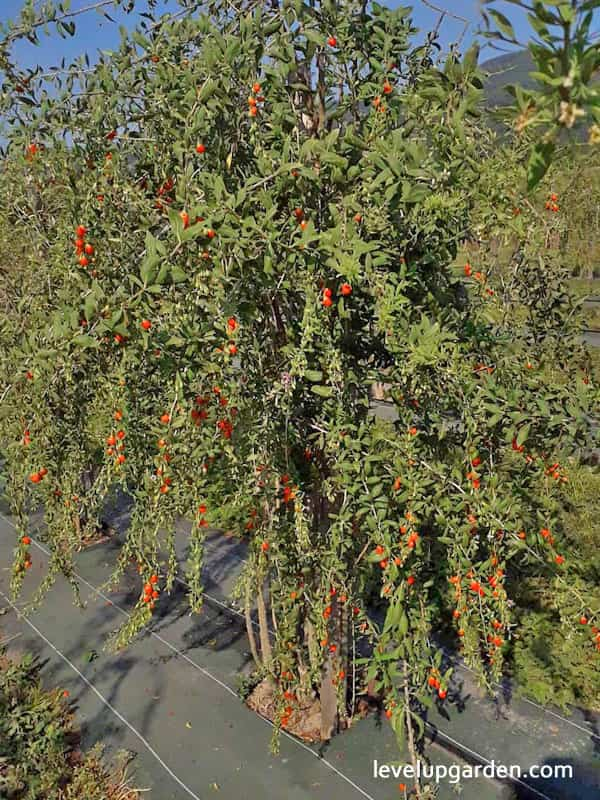
It has leaves that are alternated on shoots or bunched into clusters of about three. Each leaf is green, almost fleshy when fresh, and usually lanceolate (like the tip of a spear), but sometimes rounded at the tip. The aggregated leaves are up to 25 mm long, and each alternate leaf is up to 55 mm long.
Goji Berry flowers are clustered in leaf axils in clusters of 1 to 3, and are 6 to 15 mm long. Sepals are whitish tubes, shorter than the tubes, crowned by 5-6 radially triangular sepals 10-12 mm long and 3-4 mm wide, sometimes 2-lobed and strongly curved. The sepals are whitish on the lower side (facing the branch) and dark purple on the upper side.
The flowers have 5 stamens, are 3-8 mm long, and the stalk is longer than the anthers. Pistils are 8-11.5 mm long. The anthers are longitudinally lobed.
The fruit of L. barbarum, the main variety of goji berry, is bright orange-red and elliptical, 1-2 cm in diameter. The calyx of the fruit is deeply lobed once or twice. The number of seeds in the fruit varies greatly depending on the variety and size of the fruit, ranging from 10 to 60 seeds. Seeds are about 2 mm long and 1 mm wide, have a color of yellow, compressed, with a curved embryo.
III. Growing and Care Conditions
Goji Berry is easy to grow, they can bloom flowers and fruits in medium, well-drained soil and does not require rich soil. It can grow in poor soils, but more fertile soils are best if the young shoots are to be used for food. It grows best in well-drained, acidic soils with a pH of 6.8 to 8.1, with full sun,and does well in pots.

Planting
To start Goji Berries in your garden, use bare seedlings as it is known to be the most common. Early spring is the best time to plant goji berries. At this time of year, the shrub is dormant and can tolerate disturbance. Bare-root shrubs should be placed in the ground as soon as you get them. First, soak the roots in water and plant in a sunny location. Then, spread the roots out and push the soil around the roots.
However, you can also plant with seeds. First, pick clean, pulp-free, and fresh seeds. Next, sow seeds indoors in peat pots and plant outdoors in the spring when they are one year old. You can expect the fruit to appear about three years after sowing.
Light
There is an optimal amount of sun or shade required for each plant to grow Goji Berries. In full sun for about six hours or more. At a partial sun or about four to six hours. In full shade for about up to four hours.
Watering
For goji berries, on sunny days, remember to water it daily for the first 30 days.There is no need for water during the rainy days. Then, water only during periods of sustained drought. Make sure that you choose the soil that is both absorbent and well-drained.
If potted plants are placed outdoors during the warm season in a cold climate, make sure they are not saturated with too much rain and that excess water drains away. If the plant is submerged in water for too long, it will drown. It should be watered from the base of the plant as much as possible, as water on the leaves can lead to mold growth. The best time to water is early in the morning to prevent mold formation.
Fertilizer
If you can get organic matter such as compost, vermiculite, or humus, it will work very well. Chemical fertilizers such as Miracle Grow should not be used to grow goji berries because they destroy the soil. Chemical fertilizers are not necessary if sufficient organic matter such as compost is provided.
Soil Requirements
Keep the soil reasonably moist during the first few months or until new shoots emerge. Spread mulch around the base of the plant to reduce weeds and retain moisture. After that, water when the top few inches are dry.
Pruning
Goji berries grow well and produce fruit without pruning. However, light pruning of side branches to encourage branching and vigorous sprouting makes the plant easier to manage, and makes harvest easier. Prune lightly in early spring to remove dead or poorly positioned shoots.
If necessary, cut back overgrown stems to suitable branches and remove some old wood. For container plantings, trim back half of the shoots in the summer, but this may reduce the yield.
Pests and Diseases
Goji berries are not usually plagued by diseases or pests. Occasionally, you may see aphids, beetles, hawkweed caterpillar, and spider mites. Keep the plant healthy to prevent infestations, and keep the area around the plant free of debris and use insecticidal soap if necessary. Diseases include anthracnose and blight, both of which are fungal in origin.
Avoid overhead watering and plant far enough apart to allow air to circulate between the trees. As the berries ripen, they may be exposed to competition from birds. You should net the shrubs to protect the berries from the birds.
Aphids are common on Lycopersicon clavatum. Recently, the disease has spread throughout the world on infected seedlings with the powdery mildew. In the case of Lychnum, the most common disease is Arthrocladiella mougeotii, a type of fungal disease that is found on leaves. A simple measure is to remove the lower leaves so that this disease is less likely to occur.
Pollination
Goji berries are self-incompatible, meaning that male and female reproductive organs appear on the same plant. This means that you can harvest from a single plant. However, if two or more plants are close together, the yield of fruits would be much higher. Goji berries produce purple flowers in the spring, which are pollinated by insects.
IV. Uses
Goji berries are considered to have super nutrients with tremendous medical and health potential, making them a popular juice. The benefits of goji berries are numerous and can be used in home gardens. They are most commonly consumed in capsules or dried fruit, but if you can get your hands on fresh goji berries, you can consume one to two spoonfuls per day.

In the Himalayas, it is common knowledge that they are effective against altitude sickness. Indeed, it has powerful fatigue-relieving and immune-activating effects. It is also known to have anti-aging and antioxidant properties.
Goji berries seem to have extraordinary immune-enhancing properties. Taoists consume them dried and prepare and drink goji berry juice. Wolfberries contain many vitamins, including C and E, vitamins B1, B2, and B6, beta-carotene, protein, and flavonoids.
It is grown as a hedge, it thrives on the seashore. It has a broad root system and can be planted to stabilize sandy banks.
V. Why should you buy this plant
Goji berries (Lycium barbarum) are used to treat a variety of ailments and diseases. It is a superfood containing antioxidants, amino acids, vitamins C, B, and E, and essential fatty acids, and is widely used to reduce inflammation. There are a lot of medicinal benefits in consuming this fruit.
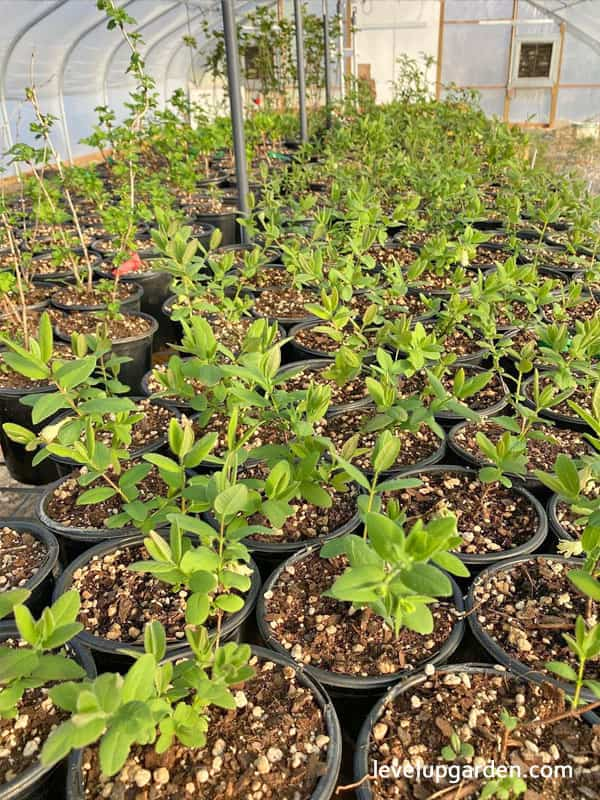
Most goji berries come from China and are treated with chemicals long banned in the US. This can turn a very healthy food into a toxic one. Goji berries are one of the easiest plants to grow organically. It is disease resistant and is rarely bothered by insects. Even deer and rabbits will leave this plant alone.
Goji berries are naturally drought tolerant and prefer well-drained soil. It grows well in the dry West and humid East and can tolerate temperatures down to -10 degrees Fahrenheit. It can also be grown outside of zones 5-9.
Plant it in containers and bring indoors when temperatures drop. Goji will grow in sun or semi-shade, but will yield more in the sun. When planted outdoors, it will grow into a vine bush if planted every 4 feet. Some people plant it on a trellis. They self-pollinate, but are more effective with a mate.
Goji berries are nutritious. It is a great patio plant, so anyone in the country can plant it in a pot and have a lifetime supply of the super fruit. Also, in early summer, goji berries are abundant.
As early as the second season, the bright scarlet superfruit can be harvested. In spring, new shoots grow and gorgeous white and purple flowers bloom. This will give your garden new colors for your visitors to enjoy.
Harvested berries will be sweeter if left planted and taste much better than store bought berries. Eat them raw, juice them, freeze them, or dry them with newspaper. Many people like to eat them as raisins. Plant several and enjoy healthy goji berries all year round.
VI. FAQs
Are goji berries easy to grow?
Dried goji berries are a popular snack. This plant is easy to grow in your own backyard. It produces berries and flowers throughout the summer until the first frost. If not pruned, it will grow up to 10-13 feet tall and 4 feet wide.
How big will goji berries grow?
Goji is a shrub that can eventually reach 1-3 meters in height. The grower will make rows 2 meters apart, spaced 60 centimeters apart. Using this method, 15 plants planted in 30-foot rows can produce 100 pounds of berries in a year.
Will goji berries spread?
One goji berry plant can grow up to 12 feet (6.4 m) tall and 10 feet (3 m) wide. It spreads vigorously. When planted in garden soil, it is a sucker. It should always be pruned to prevent it from taking over the garden.
How often should goji berries be watered?
Goji berries are quite drought tolerant once planted, so overwatering in heavy or poorly drained soil will result in root rot. A general rule of thumb for in-ground plantings is to water 1 inch from the base of the plant per week.
Are there any side effects of goji berries?
Goji berry side effects range from causing diarrhea to lowering blood sugar levels. They can also cause a decrease in blood pressure. In some cases, it can cause allergic reactions or interfere with the function of certain medications, causing bleeding.
